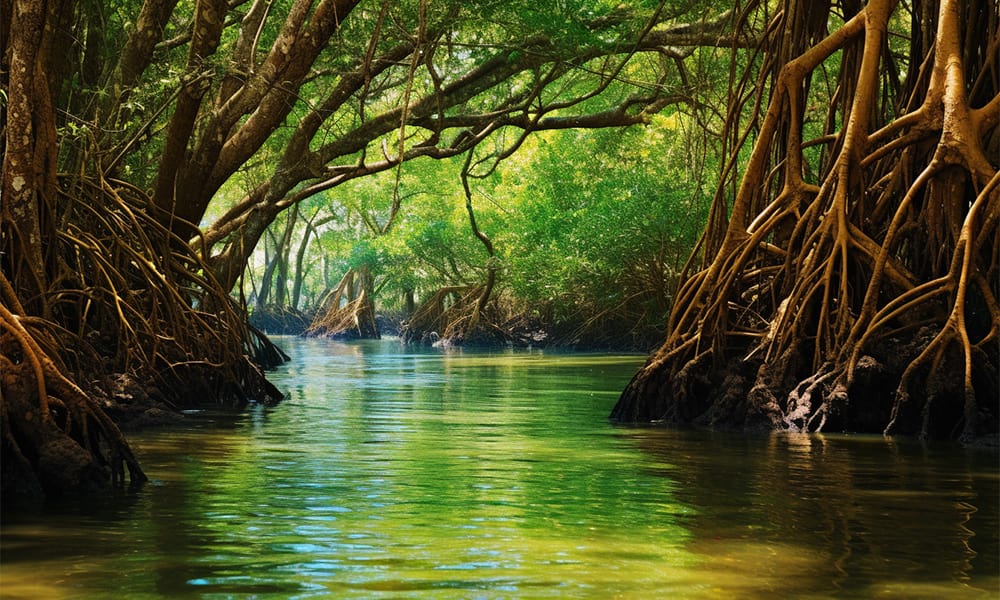The preservation and protection of mangroves have emerged as crucial strategies in the battle against rising sea levels and the potential devastation caused by high tides and storms, according to experts from the University for Peace (UPAZ). As a natural barrier against oceanographic events, mangroves play a vital role in safeguarding coastal areas.
This insight was presented during the Climate Change Adaptation Project in Guanacaste, a collaborative effort between UPAZ, the U.S. Embassy, and other stakeholders, at the enchanting Hotel Cala Luna in Playa Langosta.
The research conducted by Omar Lizano and Melvin Lizano underscored the necessity of preserving mangroves, particularly in estuarine regions like Playa Tamarindo, to counteract beach material loss and maintain ecological equilibrium. The study emphasized that mangroves function as anchors, mitigating coastal erosion and preventing sediment depletion. This ecological function is of utmost significance in the coastal zones of Guanacaste.
Furthermore, the researchers highlighted the role of mangroves in preventing saline intrusion into freshwater sources. The intricate root systems of these coastal wonders restrict the ingress of saltwater, thereby safeguarding the delicate balance of inland ecosystems.
Tamarindo Beach boasts the largest estuary and mangrove swamp in Latin America, earning the prestigious designation of a RAMSAR Site, reserved for globally significant wetlands. The region is also home to other breathtaking estuaries, such as the San Francisco and Ventanas estuaries, within the confines of the Las Baulas National Marine Park.
Alexander Lopez, Project Coordinator at UPAZ, emphasized the importance of integrating sea level rise and coastal erosion variables into regulatory plans for coastal areas. By making these considerations mandatory for local governments, urban planning and land use can be effectively aligned to mitigate potential problems like coastal erosion. Additionally, he suggested reevaluating construction practices, advocating for the adoption of raised structures in anticipation of the projected increase in sea level.
Hernán Imhoff, President of the Tamarindo Chamber of Commerce and Tourism, stressed the economic significance of the estuary for small business owners engaged in tourism. The picturesque site attracts national and international visitors, who are offered boat tours to appreciate its natural splendor. Due to the low environmental impact of these activities, the mangrove ecosystem has been preserved for many years, making it an alluring option for tourists and a crucial source of income for the local community.
The findings of the UPAZ study underscore the urgent need to prioritize the preservation and protection of mangroves as a formidable defense against the perils of climate change, ensuring the long-term sustainability of coastal regions while simultaneously nurturing vibrant ecosystems that captivate visitors from near and far.

